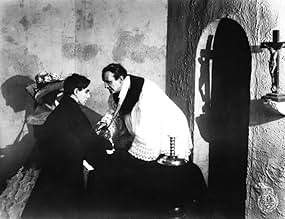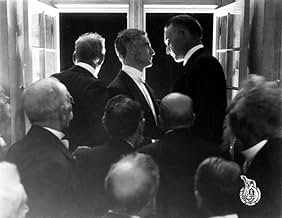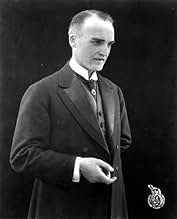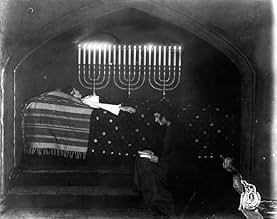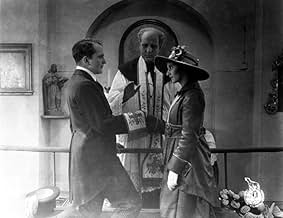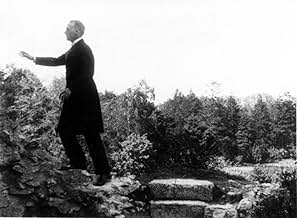Præsidenten
- 1919
- 1h 25min
CALIFICACIÓN DE IMDb
6.6/10
1.1 k
TU CALIFICACIÓN
Agrega una trama en tu idiomaA judge sees his illegitimate daughter facing a trial for the murder of her newborn child, also out of wedlock. He is certain that she will be sentenced to death.A judge sees his illegitimate daughter facing a trial for the murder of her newborn child, also out of wedlock. He is certain that she will be sentenced to death.A judge sees his illegitimate daughter facing a trial for the murder of her newborn child, also out of wedlock. He is certain that she will be sentenced to death.
- Dirección
- Guionistas
- Elenco
Carl Walther Meyer
- Rigsherre von Sendlingen
- (as Carl Meyer)
- Dirección
- Guionistas
- Todo el elenco y el equipo
- Producción, taquilla y más en IMDbPro
Opiniones destacadas
"Praesidenten" is the first film of the great Danish film director Carl Theodor Dreyer and, for this German count, this debut is a perfect example of Dreyer's film style. It's one, with degrees of variation, he would maintain in his silent films as well as in his talkie career.
"Praesidenten" is a film perfectly constructed (the film is divided into three different but interrelated parts). Flashbacks are used to depict the terrible story of Danish noblemen who dare to fall in love with common girls; such huge mistakes will have serious consequences for the main characters as Herr Von Sendlingen says to his son at the beginning of the film, "never marry a commoner, for no good ever comes of it, naught but curses and remorse " ah, wise words, indeed!.
"Praesidenten", besides having a solid and narrative film structure very well rendered, has an elegantly slow pace, this is very characteristic in Herr Dreyer's films, film cadences and pauses endow the story with intensity and emotive nature, showing the vicissitudes of three generations of a family broken due to impossible or imprudent relationships. When at the end of the film the main character has the opportunity to atone his sins and make amends with the past, he finally carries the burden of stricter convictions and codes of honor.
"Praesidenten" is a solid debut, one with graceful and delicate pacing a perfect example of the Herr Dreyer oeuvre.
And now, if you'll allow me, I must temporarily take my leave because this German Count, as President of the "Associated Aristocrats Foundation" must attend another decadent meeting.
Herr Graf Ferdinand Von Galitzien
"Praesidenten" is a film perfectly constructed (the film is divided into three different but interrelated parts). Flashbacks are used to depict the terrible story of Danish noblemen who dare to fall in love with common girls; such huge mistakes will have serious consequences for the main characters as Herr Von Sendlingen says to his son at the beginning of the film, "never marry a commoner, for no good ever comes of it, naught but curses and remorse " ah, wise words, indeed!.
"Praesidenten", besides having a solid and narrative film structure very well rendered, has an elegantly slow pace, this is very characteristic in Herr Dreyer's films, film cadences and pauses endow the story with intensity and emotive nature, showing the vicissitudes of three generations of a family broken due to impossible or imprudent relationships. When at the end of the film the main character has the opportunity to atone his sins and make amends with the past, he finally carries the burden of stricter convictions and codes of honor.
"Praesidenten" is a solid debut, one with graceful and delicate pacing a perfect example of the Herr Dreyer oeuvre.
And now, if you'll allow me, I must temporarily take my leave because this German Count, as President of the "Associated Aristocrats Foundation" must attend another decadent meeting.
Herr Graf Ferdinand Von Galitzien
It did seem to be a good film but i had trouble reading quite a few of the captions. The writing was too small and because of this it was hard to follow the storyline.
This film is very interesting for various reasons. I will here look briefly at its style, which was explicitly made by Dreyer (confirmed in a letter to Erik Ulrichsen 11th March 1958, now in the Danish Film Museum) to make the interiors reflect the characters. For this, he modeled the sets after paintings by Vilhelm Hammershøi and James Whistler. This is very apparent if one looks at Whistler's portrait of his Mother against a gray wall, and the many Hammershøi paintings where he balances the model(s) also against gray, cool blue or white walls decorated with a few small portraits strictly arranged. I would also like to add that a lot of the white faces and hands, which Dreyer often frames in almost complete darkness, reminds me of how the graphic work by Edvard Munch can make any face look like a premature death mask. There is certainly in this film much interplay between the Nordic darkness of the soul and the barren interiors of the late aristocracy. These arrangements make the film appear as a well thought out study of how to balance painterly and cinematographic style. However, many of these carefully constructed scenes are very short. I would assume that longer takes would make for a very much more beautiful and contemplative film, but alas it would also slow down the hectic and melodramatic plot, which just gets more frantic with each scene, ending in a tour de force of cross cutting a la Griffith. So in a way the plot kills the style. Oh well.
The current version was created in 1999 from the original nitrate negative and released on DVD in 2004 by the Danish Film Institute. It is tinted in amber, blue and red. Compared with film stills I have seen in black and white, the DVD looks very dark. For example the scene when Karl Victor reads the letter informing him that it is his daughter that will be prosecuted for infanticide, the wallpaper behind him is completely obscured, making the white passepartout framing the portrait on the wall shine in the darkness. In the still of the same scene you can clearly see the pattern in the wallpaper around the picture, making the whole scene more naturally lighted. Since the lightning in the film as a whole is full of dark imagery, this loss of detail makes the film look more expressionistic and gloomy than originally intended. Of course, that might only make it more interesting for fans of Nosferatu, Vampyr and other Gothic nightmares. But Præsidenten is not a Gothic tale, but rather a moral melodrama typical of its time, with echoes of Ibsen, Strindberg and Söderberg (writer of Gertrud). But as seen in the current version, it certainly looks Gothic - and some might find its charm just because of that.
The current version was created in 1999 from the original nitrate negative and released on DVD in 2004 by the Danish Film Institute. It is tinted in amber, blue and red. Compared with film stills I have seen in black and white, the DVD looks very dark. For example the scene when Karl Victor reads the letter informing him that it is his daughter that will be prosecuted for infanticide, the wallpaper behind him is completely obscured, making the white passepartout framing the portrait on the wall shine in the darkness. In the still of the same scene you can clearly see the pattern in the wallpaper around the picture, making the whole scene more naturally lighted. Since the lightning in the film as a whole is full of dark imagery, this loss of detail makes the film look more expressionistic and gloomy than originally intended. Of course, that might only make it more interesting for fans of Nosferatu, Vampyr and other Gothic nightmares. But Præsidenten is not a Gothic tale, but rather a moral melodrama typical of its time, with echoes of Ibsen, Strindberg and Söderberg (writer of Gertrud). But as seen in the current version, it certainly looks Gothic - and some might find its charm just because of that.
"The President", known as Carl Theodor Dreyer's first feature-length film, includes a trial scene, solved in a traditional way, a strong contrast with his famous masterpiece "Passion of Jeanne d'Arc". In general, the "mise-en-caméra" is rather conventional, except for a couple of shots, both related to romantic situations in which the filmmaker was "inspired": one is a overhead shot of a kiss, the other two lovers' reunion on a bridge reflected on a pond. There are a few silly distracting shots dealing with puppies; one or two inserts seemingly erroneous, but in any case, it is an enjoyable viewing, and Dreyer's ethical considerations and spiritual leaning –which reached a sublime level in "Ordet"- are already sketched here.
Dreyer is one of my favorite directors and his debut is one of the best debuts I've seen. The story is captivating, sometimes pretty brutal. Genuine tear-jerker.
Nice camera work, great musical score. A must-watch for fans of silent movies.
Nice camera work, great musical score. A must-watch for fans of silent movies.
¿Sabías que…?
Selecciones populares
Inicia sesión para calificar y agrega a la lista de videos para obtener recomendaciones personalizadas
Detalles
- Tiempo de ejecución1 hora 25 minutos
- Mezcla de sonido
- Relación de aspecto
- 1.33 : 1
Contribuir a esta página
Sugiere una edición o agrega el contenido que falta

Principales brechas de datos
By what name was Præsidenten (1919) officially released in Canada in English?
Responda
